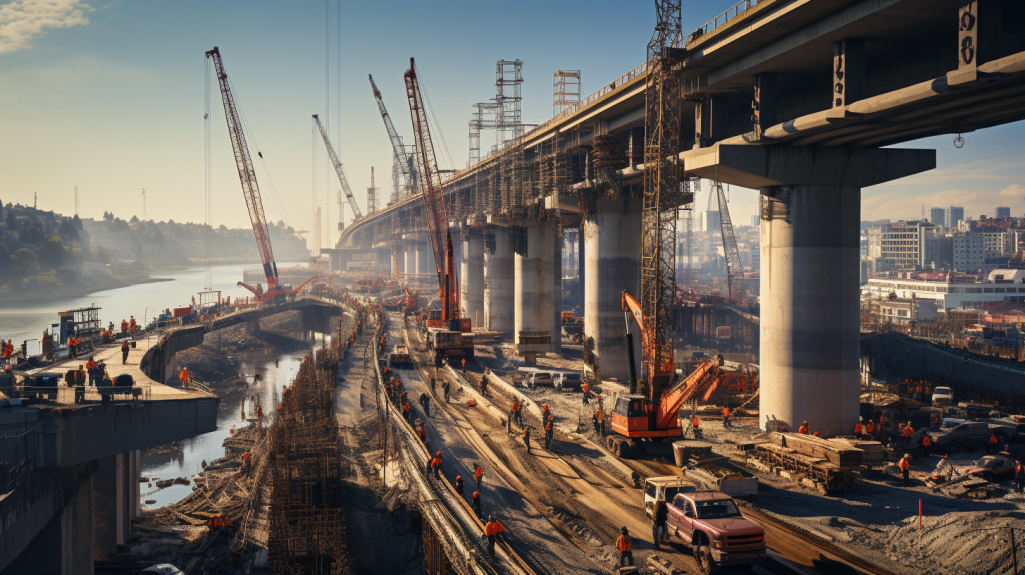India-Middle East-Europe Economic Corridor

In today’s interconnected world, fostering global partnerships is crucial for economic growth and stability. One such groundbreaking initiative is the India-Middle East-Europe Economic Corridor announced by Saudi Crown Prince Mohammed bin Salman at the G20 summit in India on September 9, 2023. This ambitious project seeks to create a vital economic bridge connecting India, Europe, and the Middle East. Let’s delve into the details of this game-changing venture and its role within the Partnership for Global Infrastructure Investment (PGII).
Check out our blog on Expanding BRICS: Challenging Global Dynamics

The India-Middle East-Europe Economic Corridor: A Green and Digital Bridge
The India-Middle East-Europe Economic Corridor is set to transform the landscape of international trade and connectivity. This colossal endeavor includes the development of pipelines for electricity, hydrogen, and railways. These infrastructural marvels are not just about enhancing connectivity but also about bolstering international energy security.
This corridor goes beyond traditional transportation. It envisions a rail and shipping network that will stretch across continents, serving as a pathway for goods, energy, and data. The project’s official documents describe it as “a green and digital bridge across continents and civilizations,” highlighting its commitment to sustainability and technological advancement.
Partnership for Global Infrastructure Investment (PGII): Bridging the Investment Gap
The PGII, an initiative backed by the G7 nations, plays a pivotal role in realizing the India-Middle East-Europe Economic Corridor. It’s not merely an infrastructure project but a commitment to sustainable, inclusive, and resilient infrastructure development. The goal is to mobilize up to USD 600 billion by 2027 to address the infrastructure deficit in partner countries.
At the 2021 G7 Summit, President Biden and G7 leaders unveiled their vision for this partnership. It aims to meet the substantial infrastructure needs of low- and middle-income countries while safeguarding economic and national security interests. In essence, the PGII is the G7’s response to China’s Belt and Road Initiative, demonstrating their commitment to shaping global infrastructure development.
Connecting Continents for Inclusive Growth
The India-Middle East-Europe Economic Corridor holds the promise of fostering economic development through enhanced connectivity and economic integration. At its core, it envisions a railway network linked through ports, seamlessly connecting Europe, the Middle East, and Asia. This interconnectedness isn’t limited to physical transport; it also includes undersea cables, energy grids, and telecommunication lines, ensuring reliable access to electricity and the internet.
The corridor is poised to reinvigorate trade and manufacturing, strengthen food security, and fortify supply chains. It’s a multifaceted approach that aims to attract investments from various partners, including the private sector, fostering the creation of quality jobs and sustainable economic growth.
PGII: Game-Changing Global Infrastructure Investment
The Partnership for Global Infrastructure Investment is more than just a financial commitment. It’s a strategic move to bridge the infrastructure gap in developing countries, fortify the global economy, and secure supply chains. The United States, in collaboration with its G7 partners, aims to mobilize a substantial $200 billion for PGII over the next five years, leveraging grants, federal financing, and private sector investments. By 2027, the collective goal is to reach a staggering $600 billion in global infrastructure investments.

Frequently Asked Questions (FAQs)
The India-Middle East-Europe Economic Corridor is a transformative initiative aimed at creating an economic bridge between India, Europe, and the Middle East. It includes the development of pipelines for electricity, hydrogen, and railways to enhance connectivity and energy security.
The PGII is a collaborative effort by the G7 nations to address the global infrastructure deficit. It aims to mobilize up to USD 600 billion by 2027 to support sustainable and inclusive infrastructure development in partner countries.
The corridor promotes sustainability by focusing on green and digital infrastructure. It includes initiatives like hydrogen pipelines and undersea cables to expand access to clean energy and reliable internet connectivity.
The PGII is seen as a counterbalance to China’s BRI because it emphasizes transparency, inclusivity, and sustainability in infrastructure development, providing an alternative to countries seeking infrastructure investments.

In Conclusion
The India-Middle East-Europe Economic Corridor and the Partnership for Global Infrastructure Investment represent a significant shift in how nations approach global connectivity and infrastructure development. These initiatives are not just about building physical networks; they are about forging partnerships, fostering inclusive growth, and securing a sustainable future. As we witness the world becoming increasingly interconnected, these endeavors are a testament to the power of collaboration in shaping the world’s economic landscape.
Inclusive, sustainable, and interconnected—these are the keywords that define the India-Middle East-Europe Economic Corridor and the PGII. Together, they hold the potential to unlock growth, stability, and prosperity across continents and civilizations.





